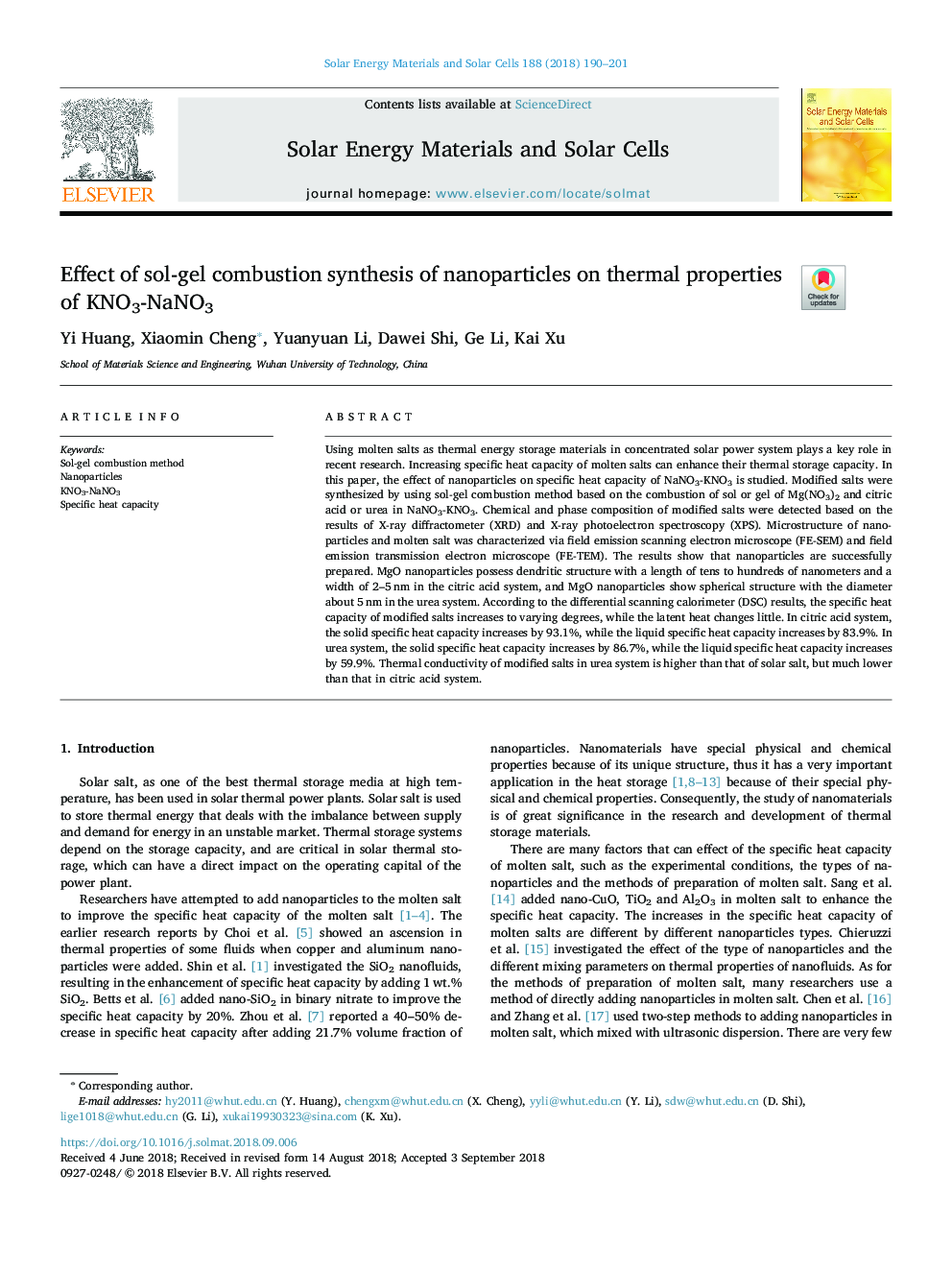| Article ID | Journal | Published Year | Pages | File Type |
|---|---|---|---|---|
| 10139009 | Solar Energy Materials and Solar Cells | 2018 | 12 Pages |
Abstract
Using molten salts as thermal energy storage materials in concentrated solar power system plays a key role in recent research. Increasing specific heat capacity of molten salts can enhance their thermal storage capacity. In this paper, the effect of nanoparticles on specific heat capacity of NaNO3-KNO3 is studied. Modified salts were synthesized by using sol-gel combustion method based on the combustion of sol or gel of Mg(NO3)2 and citric acid or urea in NaNO3-KNO3. Chemical and phase composition of modified salts were detected based on the results of X-ray diffractometer (XRD) and X-ray photoelectron spectroscopy (XPS). Microstructure of nanoparticles and molten salt was characterized via field emission scanning electron microscope (FE-SEM) and field emission transmission electron microscope (FE-TEM). The results show that nanoparticles are successfully prepared. MgO nanoparticles possess dendritic structure with a length of tens to hundreds of nanometers and a width of 2-5â¯nm in the citric acid system, and MgO nanoparticles show spherical structure with the diameter about 5â¯nm in the urea system. According to the differential scanning calorimeter (DSC) results, the specific heat capacity of modified salts increases to varying degrees, while the latent heat changes little. In citric acid system, the solid specific heat capacity increases by 93.1%, while the liquid specific heat capacity increases by 83.9%. In urea system, the solid specific heat capacity increases by 86.7%, while the liquid specific heat capacity increases by 59.9%. Thermal conductivity of modified salts in urea system is higher than that of solar salt, but much lower than that in citric acid system.
Related Topics
Physical Sciences and Engineering
Chemical Engineering
Catalysis
Authors
Yi Huang, Xiaomin Cheng, Yuanyuan Li, Dawei Shi, Ge Li, Kai Xu,
